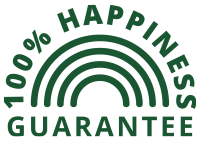If you’re like us, you’re all too familiar with the monthly plague of desperately needing something salty, crunchy, or sweet right around the time your period comes. You’ve probably read countless articles on what you can swap them out for but really, you’re more interested with the ‘why.’
First, we need to connect some dots.
Understanding the fluctuation of estrogen and progesterone in our bodies during our cycle can give us some insight. Keeping it very simple, during our periods both estrogen and progesterone are at their lowest points. Estrogen will steadily rise in our follicular phase—the phase right after menstruation—to peak right around ovulation. Progesterone is slowly rising during this time—at a much slower rate than estrogen—and it will peak mid-luteal phase. Estrogen is falling during the luteal phase—it started to dip right after ovulation—and will continue falling until the next follicular phase. After progesterone peaks mid-luteal, it will fall with estrogen.
Confused yet?
And, anyway, what do our sex hormones have to do with food cravings?
A lot, actually. One study revealed that higher estrogen in the luteal phase is associated with increased carbohydrate intake, while higher progesterone is associated with higher cravings of sweetened beverages. Another study found that when estrogen levels are higher during the menstrual cycle, overall food intake decreases—aka you’re not as likely to binge eat. In the reverse scenario—estrogen levels being lower— food intake increases—aka you might feel the urge the binge eat a bit more. Taking a quick assessment of your eating habits might be a good indicator of where your hormone levels sit. If you’re concerned about estrogen levels, we recommend talking to your doctor about testing those levels, which could reveal even more of the picture for you.
A quick tidbit about estrogen and the brain
Our brains have receptors for estrogen, and higher levels have been associated with feelings of fullness and satisfaction after eating. It also suppresses hunger by decreasing levels of ghrelin—the hunger hormone—and increasing the effects of cholecystokinin—an appetite-suppressing hormone. If you thought estrogen was a one-track hormone, your mind might be a little blown now.
Another note about hormones and hunger levels
There have been some studies that point toward resting metabolic rate (RMR) being higher during our luteal phases, which could contribute to feeling we need more calories. If our bodies are burning more calories sitting still, we’ll need to increase our intake to avoid a caloric deficit. There is also evidence that it could vary in menstruators, so we can’t lay a firm stake in the ground regarding this information. That is to say, not every body works the same. Some might have an increase of 2% in their RMR while others may have an increase of 8%. Just know that if you’re feeling ravenous a few days into your luteal phase, this might be why.

You might be tempted to reach for unhealthy foods because…
Dopamine and serotonin are our feel-good hormones. They can be triggered by things like taking a walk in nature, watching your favorite movie, and—this is a big one—eating some of your favorite foods. For most of us, these are things like cookies, cake, pasta, candy, pretty much anything highly refined and loaded with added sugars. Foods high in sugar are sure to boost your mood temporarily but you’re going to crash sooner or later. What’s worse is all this excess sugar can catapult you into a domino effect of other symptoms that can wreak havoc on your other hormones.
So what can we do about these pesky cravings?
A good place to start is tracking your cycle, if you’re not doing so already, so you have an idea of when they will strike next. If you can prepare in advance, you have a better chance in avoiding foods that simply won’t serve you or your hormones. Check out some of our go-to tips for pain free period eating—bonus these are also high in fiber and low in sugar—added sugar that is! You don’t have to be on your period to get the benefits from these changes. Since a lot of our hormones work in tandem with each other, it’ll be better for you in the long-run.
Another great addition to your routine is The Daily—our plant based hormone support supplement. It’s designed to help balance your hormones, help stabilize your mood, give you healthier looking skin, and curb those cravings. Who knew two little capsules a day could do it all!

At the end of the day it’s all about moderation and consistency. Don’t beat yourself up if you have a holiday cookie or French fries while out with friends. You can give into your cravings from time to time and not throw everything so far out of whack that you’ll never set it right again. Hormone level changes throughout our cycles are normal but you don’t have to let them control you.
Oh! And don’t forget to check out our favorite hot drink recipe, perfect for fall!


